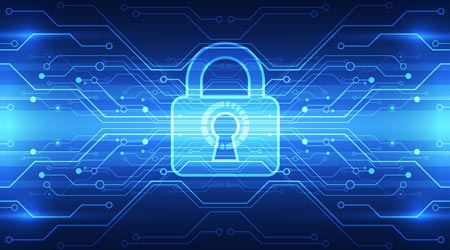Emerging Security Technologies Offer FMs Range of Choices
Part 1 of a 2-part article explaining how smart phones and the Building Internet of Things can help FMs make facilities more secure.
Many security technologies that previously were the stuff of science fiction have now become reality. Change has come to all elements of the security system, from infrastructure hidden above ceilings and behind walls to technology that affects the way occupants interact with security systems. And new technology isn’t all that’s new in some facilities: There are security systems that, while not new to the industry, have seen an upswing in use.
Given all the changes, facility managers and security directors are faced with a potentially daunting array of choices. And it’s important to keep up. “Understanding the technology can help a facility manager get what they want out of it,” says Sean Ahrens, practice leader, security consulting and design services, Jensen Hughes. There’s a lot of “high-end, James Bond kind of stuff” that may not be necessary, he says. Without a careful evaluation of the product and an understanding of what is needed, facility managers may end up with a “$35,000 product that doesn’t do what you want it to do. A prudent approach is extremely important, which requires a lot of investigation and testing,” he says.
Here’s a look at some of the technology areas facility managers should be familiar with.
The idea of using smart phones as access control credentials has grabbed the attention of a lot of facility managers. “It has a lot of benefits,” says Coleman Wolf, security practice leader for Environmental Systems Design, Inc., “but you need to understand how it works and how to implement it.”
Wolf observes that a lot of facility managers are “interested in moving to mobile devices as the center of everything,” including access to a building. He says he knows many facility managers who are interested in using smart phones for access control credentials though “not as the primary means of access control” at this time. In those cases, it may function as an “add-on,” with a card, key fob, or biometrics as primary control.
Wolf has seen the most interest coming from colleges and universities. The likely reason for the interest is the younger demographic — a population that is “accustomed to basing everything off their personal phone.”
Smart phones could also play a growing role in visitor management, says Ahrens. For example, the human resources department may send an email to someone with an appointment to enter the facility. “With a smart phone, the recipient can open an app, pre-register, submit a photo and contact details, and be granted the temporary right to access the building with his or her phone acting as the credential,” says Ahrens. “That allows people to bypass having to go through security when they arrive and go directly to their meeting as trusted partners. Likewise, a pre-registered person may be flagged as someone who needs an escort inside the facility, so he could then be redirected to talk with security and access would be provided via an escort.”
The Big Picture
Facility managers who work for large organizations might do well to check out emerging GPS (global positioning system) and IPS (indoor positioning system) technologies, says Ahrens. These systems can be useful for facility managers “who need to distribute information over a large/global area.” Such messages could include information about incoming storms, geopolitical instability, and active-shooter situations. GPS can be used to tag assets, employees, and contractors and “push information out very quickly,” says Ahrens.
By selecting exactly which areas should receive what messages, facility managers can avoid bombarding employees with information that doesn’t concern them. For example, Ahrens says, a facility in Egypt doesn’t care about a storm in Iowa. On the other hand, if a global company’s computer server is down, the security team can inform all employees at once.
An IPS can help address a common problem in larger facilities. “When we dispatch security and/or medical assistance on the radio, we don’t necessarily know where those security resources are at the site,” Ahrens says. But with IPS, a security dispatcher can know that Officer A is closer than Officer B to where security is needed. Similarly, medical teams can arrive “to triage and offer life-saving services quicker,” Ahrens says. And with an active-shooter situation, security “can coordinate resources with law enforcement,” allowing for a faster response, particularly with larger facilities.
“With IPS, especially in campus environments, we can know where all our people are,” Ahrens says. With that information, security could send specific messages to groups of people to evacuate or shelter in place, and would know whether people are at home or in some other location where they are not part of the incident. But privacy concerns could limit the use of IPS, since some people might not want to allow themselves to be tracked.
As GPS technology allows for organization-wide distribution of information from a central source, it provides an opportunity for synergy with global security operations centers (GSOC), says Ahrens. Typically, each site has a dispatch/control center. A global security operations center provides an opportunity to centralize these functions and improve consistency. The operations centers are staffed 24/7 with “people in a constant state of readiness and monitoring.” An operations center team can distribute information to individual sites through a “framework” of methods including phone, email, and radio. The result, Ahrens says, is “situational awareness for the management of a crisis,” as opposed to an individual at a remote site dusting off a handbook to determine a company’s policy for a particular situation. “(Global security operations center) personnel are intimately prepared for a consistent response and communication into the organizations, which can support a more rapid recovery/resumption,” Ahrens says. “That’s all they do.” Their responsibilities can range from contacting facility management staff regarding chiller alarms to calling local law enforcement.
And they can feed real-time information to those who need to make decisions, similar to “battlefield intelligence.” For example, suppose there is an incident at a company’s Bangladesh facility. In the past, the CEO might hear about it through the news media. But with a global security operations center, key personnel learn of problems more rapidly, allowing resources to be assembled sooner.
Global security operations centers can be cost effective, Ahrens says, because one center staffed 24/7 with everything needed for security can replace a multitude of control centers in various locations.
Related Topics:













